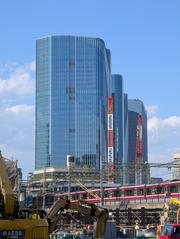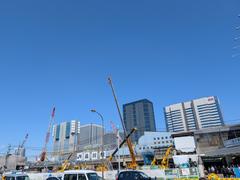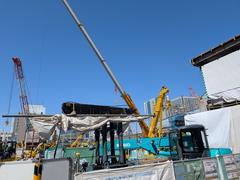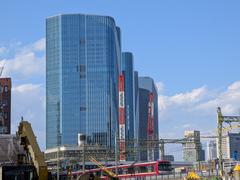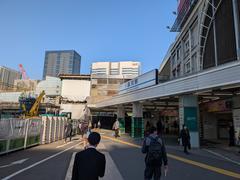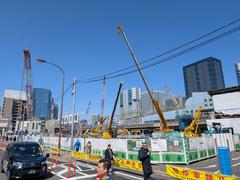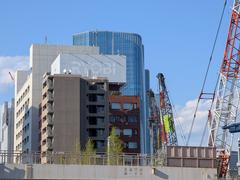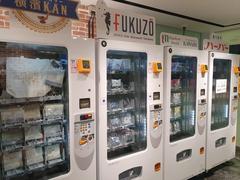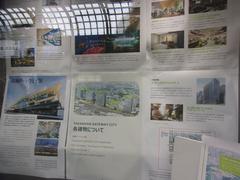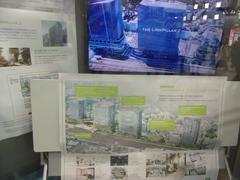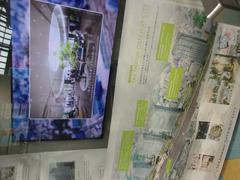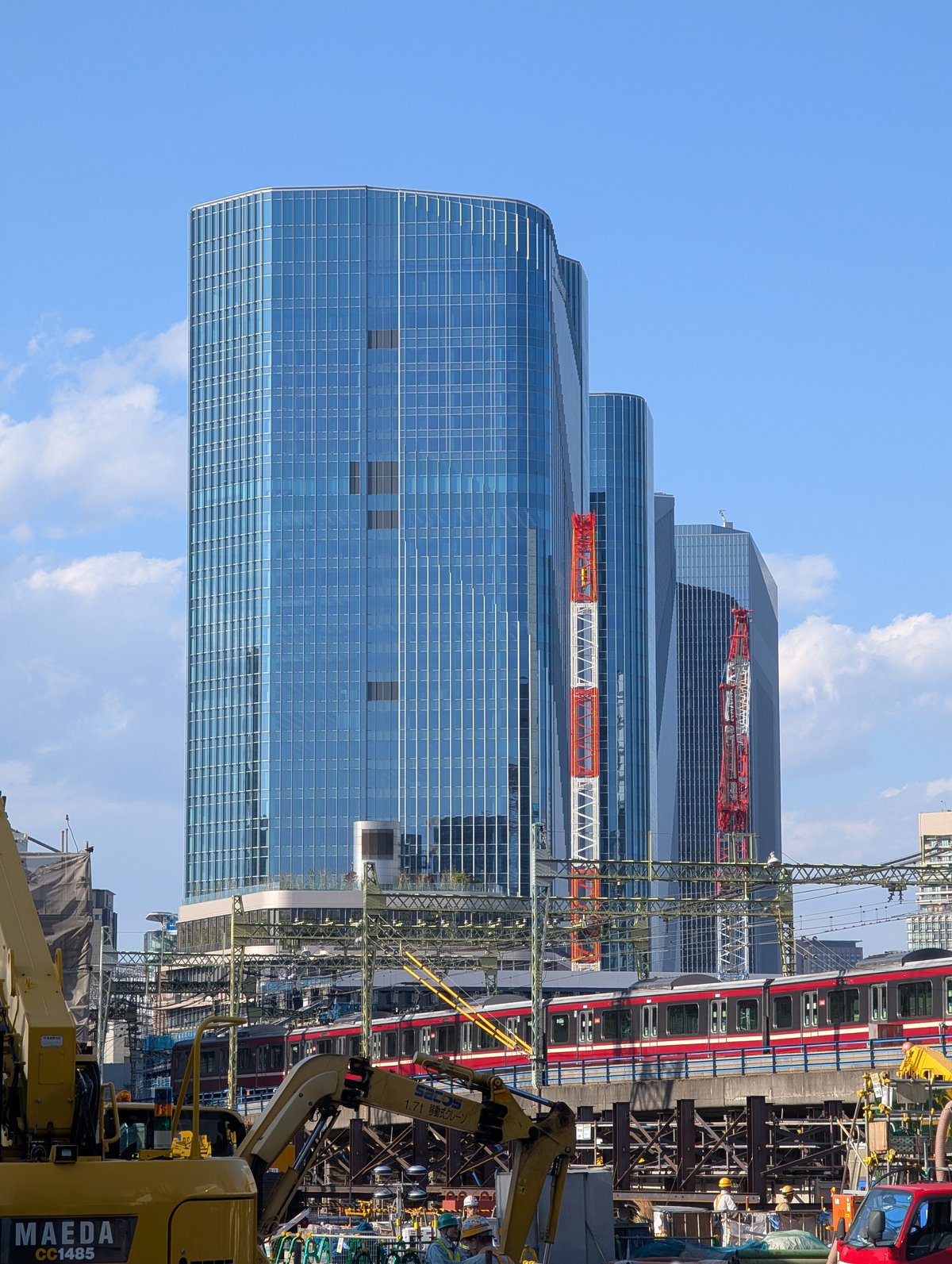
Shinagawa Station Tokyo: Visiting Hours, Tickets, and Comprehensive Travel Guide
Date: 14/06/2025
Introduction: Shinagawa Station’s Legacy and Modern Role
Shinagawa Station stands at the crossroads of Tokyo’s rich railway heritage and its ongoing modernization. Established in 1872 as the terminus for Japan’s inaugural passenger train journey, Shinagawa is often recognized as the birthplace of Japanese railways (Atlas Obscura; Japan Experience). Its historic location along the Tokaido route, where it functioned as the first post station (shukuba) between Edo (now Tokyo) and Kyoto, cements its importance as a transportation nexus (Japan Travel).
Today, Shinagawa is a bustling multimodal hub accommodating hundreds of thousands of daily passengers. It connects JR East lines, the Keikyu Line, and the Tokaido Shinkansen, serving as a gateway to both Tokyo and major cities nationwide (JR East Statistics; Wikipedia). Modern amenities including multilingual signage, advanced ticketing systems, and universal accessibility features ensure a seamless transit experience (shinagawastation.com). Shinagawa’s surrounding district blends traditional sites such as Sengaku-ji Temple with contemporary attractions like Maxell Aqua Park and the Takanawa Gateway City redevelopment (Go Tokyo; metropolisjapan.com). This guide offers essential information for travelers, from visiting hours and ticketing to nearby attractions, accessibility, and insider tips.
Contents Overview
- Shinagawa’s Historical Foundations
- Evolution as a Transport Hub
- Modernization and the Shinkansen Era
- Station Visiting Hours and Ticketing
- Accessibility and Travel Tips
- Nearby Attractions
- Guided Tours and Special Events
- Station Layout and Navigation
- Shopping, Dining, and Amenities
- Cultural and Pop Culture Significance
- Future Developments
- Frequently Asked Questions (FAQs)
- Conclusion
Shinagawa’s Historical Foundations
Shinagawa Station’s history began on June 12, 1872, as the provisional terminus for Japan’s first passenger railway, running between Shinagawa and Yokohama (Atlas Obscura; Japan Experience; Wikipedia). The original one-story wooden station stood near Tokyo Bay, symbolizing the nation’s entry into the era of modern transportation. This pivotal moment occurred during the Meiji Restoration, when Japan embraced Western technology and rapidly modernized (Shinagawa City Historical Museum).
Prior to the railway, Shinagawa was the first post station on the Tokaido road out of Edo, serving as a hub for travelers journeying to Kyoto (Japan Travel; WeXpats). This heritage as a transport hub paved the way for its role in Japan’s railway genesis.
Evolution and Modernization
The full Shimbashi–Yokohama line opened on October 14, 1872, with Shinagawa a key stop (Shinagawa City Historical Museum). The Yamanote Line began operations at Shinagawa in 1885, and the station is considered the official starting point of the line (Wikipedia; Japan Experience). The early 20th century saw the opening of the Keikyu Line’s Takanawa Station (later Shinagawa Station) and the development of maintenance yards, reinforcing its logistical importance (Wikipedia).
The postwar era brought the Tokaido Shinkansen in 1964, although Shinagawa only became a Shinkansen stop in 2003, offering a vital alternative to the busy Tokyo Station (Wikipedia; Go Tokyo). Ongoing upgrades, such as station numbering and integration with private railways, have further modernized the station (Wikipedia). By 2019, daily usage exceeded 766,000 passengers (WeXpats).
Visiting Hours and Ticket Information
- Station Access: Open 24 hours for most train lines. Ticket gates typically operate from about 5:00 AM to midnight; check train-specific schedules.
- Ticket Purchase: Automated machines and ticket counters are available for JR lines, Keikyu Line, and Shinkansen tickets. IC cards like Suica and Pasmo are widely accepted for seamless access (shinagawastation.com).
- Shinkansen: Advance reservations are recommended, especially during peak travel periods.
Accessibility and Travel Tips
Shinagawa Station is equipped with elevators, escalators, tactile paving, accessible restrooms, and multilingual signage. Staff assistance is available upon request. For a smoother visit:
- Download station maps in advance
- Use coin lockers for luggage
- Travel outside rush hours (7:30–9:30 AM, 5:00–7:30 PM)
- Activate and purchase tickets at JR offices with English support
(JR East Accessibility; japandestination.com)
Station Layout and Navigation
- Main Exits: Takanawa Exit (west; hotels, shops), Konan Exit (east; business district), Keikyu Exit (direct airport access), Central Exit (transfers).
- Platforms: JR platforms 1–10 (Yamanote, Keihin-Tohoku, Tokaido, Yokosuka), Shinkansen platforms 13–15, Keikyu platforms (separate concourse). Transfers between JR and Keikyu lines require passing through ticket gates.
- Signage: Bilingual signs and real-time digital displays throughout the station (Tokyo Cheapo Guide).
Shopping, Dining, and Amenities
- ecute Shinagawa: 50+ shops and restaurants inside the station (ecute Shinagawa).
- Atre Shinagawa: Adjacent mall with fashion, souvenirs, and gourmet food.
- Convenience stores: 7-Eleven, Lawson, FamilyMart.
- Connectivity: Free Wi-Fi (“JR-EAST FREE Wi-Fi” and “Keikyu Free Wi-Fi”) and charging stations (JR East Free Wi-Fi).
- Luggage: Coin lockers (¥300–¥800/day), Yamato Transport delivery, short-term storage counters (Japan Guide: Coin Lockers).
- Tourist Information: Multilingual support near main exits (Tokyo Tourist Information).
Nearby Attractions
- Maxell Aqua Park Shinagawa: Aquarium with dynamic shows; 10:00 AM–10:00 PM (Go Tokyo).
- Sengaku-ji Temple: Resting place of the 47 Ronin; 6:00 AM–5:00 PM.
- Shinagawa Historical Museum: Edo-era artifacts; 9:30 AM–5:00 PM (closed Mondays).
- Tennozu Isle: Art galleries, cafes, and waterfront walks.
- Nikon Museum: Camera history; 10:00 AM–5:00 PM (closed Mondays).
- Shinagawa Shrine: Historic Shinto shrine; 6:00 AM–5:00 PM.
- Rinshi no Mori Park: Green space for picnics; sunrise to sunset.
- Meguro River: Cherry blossoms in spring.
- Shinagawa Kumin Park: Family-friendly with playgrounds; 9:00 AM–5:00 PM.
Special events include the Shinagawa Shukuba Matsuri (October), Mackerel Pike Festival (summer), and various guided tours via local tourism offices.
Accommodation Options
- Luxury: The Strings by InterContinental, Grand Prince Hotels Takanawa.
- Mid-Range: Shinagawa Prince Hotel, Miyako City Tokyo Takanawa.
- Budget: Toyoko Inn, 9h nine hours Shinagawa, Super Hotel Shinagawa Shinbanba.
- Unique Stays: Ryokan and boutique hotels in Takanawa, creative hotels in Tennozu Isle.
(Trip.com, Shinagawa Station Guide, Trip101)
Transportation Connectivity
- Shinkansen: Tokaido Shinkansen (Nozomi, Hikari, Kodama) to Nagoya, Kyoto, Osaka, and more (jrailpass.com).
- JR East Lines: Yamanote, Keihin-Tohoku, Tokaido, Yokosuka, Ueno-Tokyo Line.
- Keikyu Line: Direct to Haneda Airport (~14–20 minutes), Yokohama, Miura Peninsula (Keikyu Haneda Access).
- Narita Express: Direct to Narita Airport.
- Bus Terminals: Limousine buses to both airports, with Toei, Keikyu, Tokyu, and Airport Transport Service (jrailpass.com).
Future enhancements include the Tokyo Metro Namboku Line extension and the Chūō Shinkansen maglev service to Nagoya (opening planned for 2027) (ina-gr.com; Wikipedia).
Station Redevelopment and Urban Vision
Shinagawa is undergoing major transformation through the Takanawa Gateway City redevelopment, introducing office towers, luxury residences, and cultural spaces by 2025 (metropolisjapan.com; ArchDaily). This initiative balances modern design with preservation of historical landmarks, such as the Takanawa Chikkyo Embankment and Takanawa Railway Hotel.
Cultural and Pop Culture Significance
A commemorative tile on Platform 1 marks Shinagawa as the “birthplace of railways,” while Platform 2 features Meiji-era melodies and a nostalgic steam whistle (Atlas Obscura; Japan Experience). The station appears in classic Japanese cinema, notably as the site of Godzilla’s first appearance in the 1954 film (Atlas Obscura).
Traveler Etiquette and Safety
- Queue behind platform markings and let passengers disembark first.
- Maintain low noise in waiting areas.
- Smoking is restricted to designated rooms.
- Security is ensured by 24/7 surveillance, police presence, and multilingual emergency announcements.
Frequently Asked Questions (FAQs)
Q: What are Shinagawa Station’s opening hours?
A: The station is open 24 hours, but ticket offices and shops typically operate 6:00 AM–midnight.
Q: Can I use Suica or PASMO cards for all trains?
A: Yes, these IC cards are accepted on all JR and Keikyu lines.
Q: Where can I buy Shinkansen tickets?
A: At dedicated counters and machines near the Shinkansen entrance; advance booking is advised.
Q: Are there luggage storage options?
A: Yes, coin lockers and baggage counters are found throughout the station.
Q: How do I get to Haneda Airport?
A: Use the Keikyu Line for a direct 14–20 minute ride.
Q: Is the station accessible for travelers with disabilities?
A: Yes, with elevators, tactile paving, accessible restrooms, and staff assistance.
Conclusion
Shinagawa Station is much more than a transit hub—it’s a living monument to Japan’s railway history, a launching pad for modern adventures, and a district teeming with culture and innovation. Its blend of historical sites, contemporary attractions, and comprehensive amenities makes it an ideal base for exploring Tokyo and beyond.
For the latest updates, downloadable maps, and travel assistance, download the Audiala app and follow our social channels. Plan ahead, enjoy the cultural and culinary highlights, and embrace the unique experience that only Shinagawa Station can offer.
Official Sources and Further Reading
- Atlas Obscura
- Japan Experience
- Wikipedia
- Shinagawa City Historical Museum
- Shinagawa Station Official
- JR East Statistics
- Go Tokyo
- Metropolis Japan
- ArchDaily
- INA GR
- JR East Free Wi-Fi
- Japan Rail Pass Blog
- Tokyo Cheapo Guide
- ecute Shinagawa
- Japan Guide: Coin Lockers
- Tokyo Tourist Information
- Keikyu Haneda Access
- japandestination.com
- Trip.com
- Shinagawa Station Guide
- Trip101
